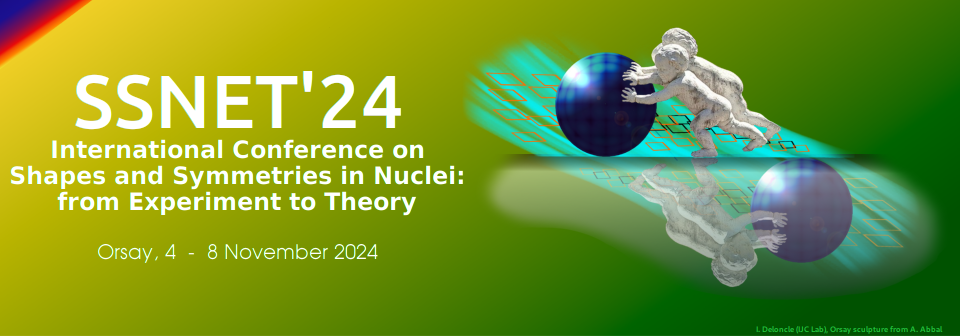Présidents de session
Session 7: Clustering in nuclei
- Elias Khan (IJCLab, Orsay, France)
In this talk I address the problem of quantifying the probability of formation of a deuteron or an alpha particle in a shell-model wave function. The method relies on the application of the Talmi-Moshinsky transformation for a deuteron and its repeated application for an alpha particle. Once this transformation is carried out, it is then assumed that the neutron-proton pair or 2n-2p quartet in...
The emergence and interplay of effective degrees of freedom, which include collective shape variables, pairing correlations, near-threshold collectivities due to coupling to the continuum, and clustering, represent one of the central questions of modern nuclear physics and quantum many-body physics more broadly. In this talk, I aim to provide specific perspectives on these phenomena and their...
Proton-neutron pairing and α-like quartet condensation in N=Z nuclei
Nicolae Sandulescu
National Institute of Physics and Nuclear Engineering, Magurele-Bucarest, Romania
A specific feature of N = Z nuclei is the occurrence of α -like quartet structures, composed by two neutrons and two protons, which have strong...
A range of theoretical approaches, including ab initio calculations, have predicted that well-developed cluster states can be found in the low-lying states of light neutron-rich nuclei, including the ground-state. We have realized a pioneering study at RIKEN based on the measurement of triple differential cross-sections of the cluster knockout reactions (p,p) with proper kinematical...
Neutron-proton pairing is the only pairing that can occur in the T=0 and the T=1 isospin channels. T=1 particle-like pairing (n-n or p-p) has been extensively studied unlike T=0 neutron-proton pairing. The over-binding of N=Z nuclei could be one of its manifestation.
Neutron-proton pairing can be studied by spectroscopy as in ref.[1].We have here studied it through transfer reactions in...

